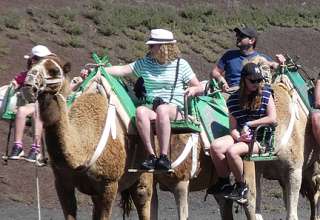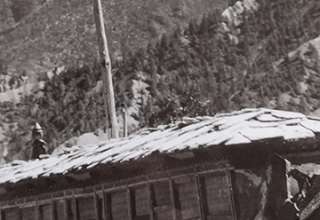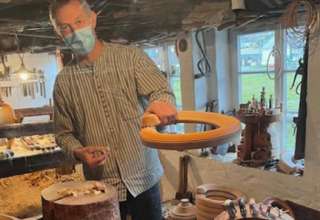Story and photos by Richard Frisbie
There are many sights to see on the road to Santiago, Spain, better known to pilgrims as St. James Way, or simply the Camino. Perhaps one of the most unusual I’ve experienced is Herreria de Compludo – the Forge of Compludo. Older than the pilgrimage itself, which became popular during the Middle Ages, the forge dates back to the seventh century.

Not only is Herreria de Compludo the oldest blacksmith shop in Spain, but it has been continuously running with a fire in the forge since then. It uses coal mined in the mountains to the north for fuel, and an ingenious system of waterpower to run everything else. It is a self-sustaining industrial marvel crafted before the dawn of the industrial age, back in the shadowy prehistory of an automation that was just a gleam in the first smithy’s eye. And it is the last vestige of a farming community nestled in a remote valley of Northwestern Castilla y Leon, Spain.
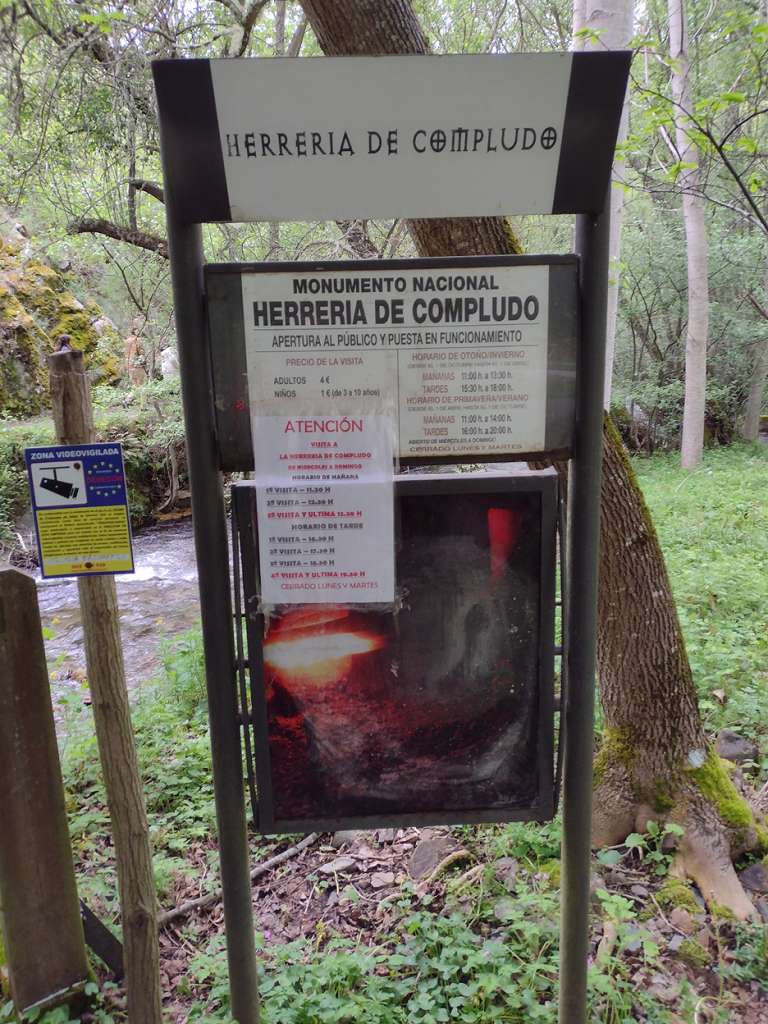
We hiked in on what was probably once a wagon road, a half-mile path winding in from the highway along a crystal mountain stream. The water swiftly descends into the valley while the path gently climbs the steep slope above it. The elevation can be misleading. As the path and stream separate a stone-lined causeway becomes visible between them, seemingly flowing up hill. The illusion ends as the path levels and it becomes evident that gravity channels the water into a small, natural-looking reservoir between the path and the stream below. Beneath the reservoir is the stone building that houses the forge. It is so shielded by the lush greenery of the forest that a casual hiker could pass it by. A small sign announces Herreria de Compludo.
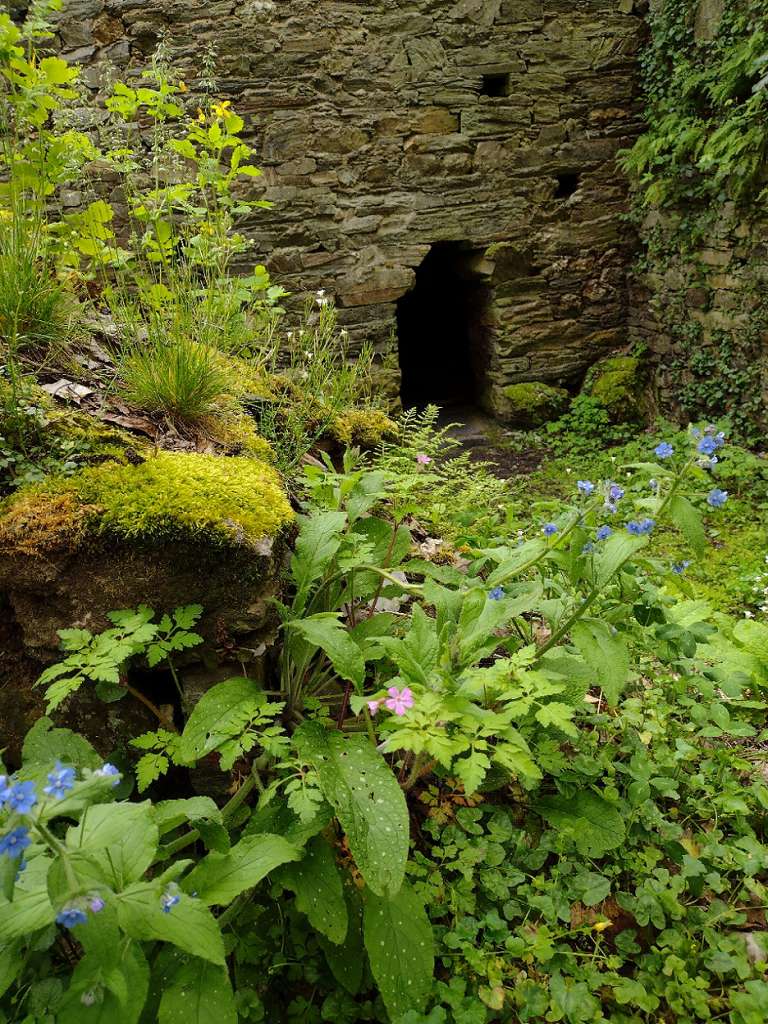
We walked down a woods path to the clearing in front of the forge to meet the smithy, Manuel Sanchez. He, with his faithful German Shepard named Rex after the popular Spanish TV series of his youth, “Rex, un Policia Diferente”, that starred a German Sheperd police dog, broke the loneliness of this nearly abandoned setting. He is the fourth-generation smithy to operate this self-sustaining forge since his great-grandfather took it over in 1908. Manuel has traced the ownership back to the 1700s, but local histories place a forge at this site one thousand years earlier! With sections of the original stone building – probably the residence – collapsed, the moss and lichen covered forge looks its age. It is thanks to Manuel’s commitment and perseverance that people can still visit to see the ancient process of forging metal into plowshares and other tools.
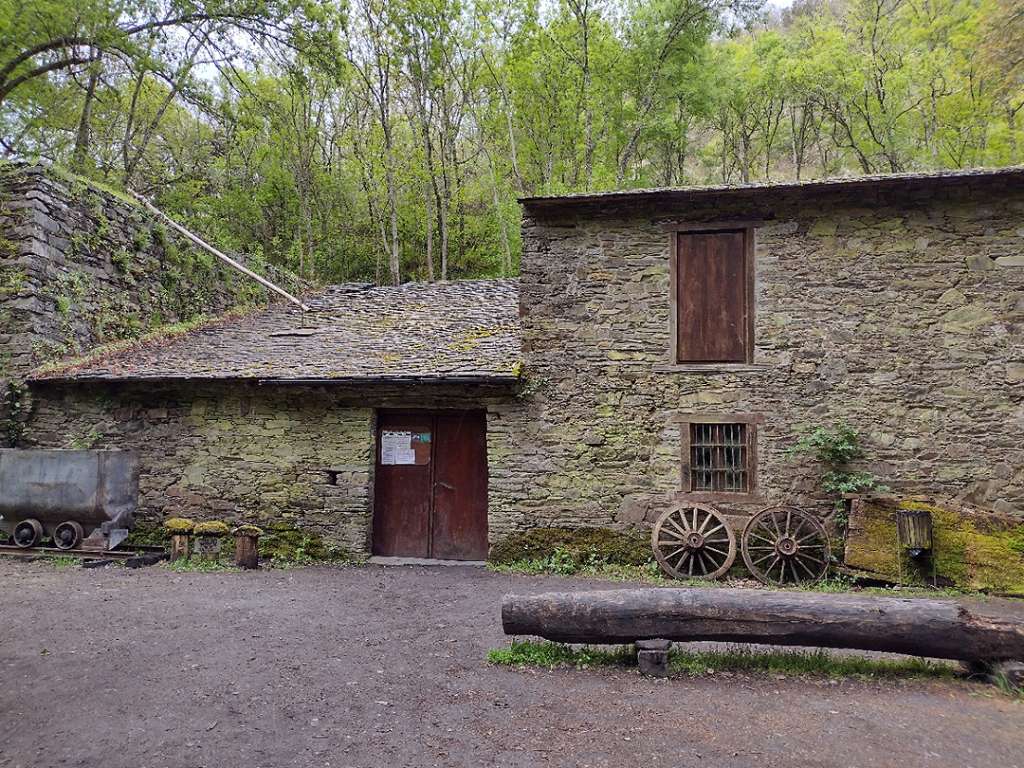
Behind an outbuilding there was a pile of stones with a tree growing out of it that Manuel described as what was the shared oven for the once-thriving farm community. As a baker, after seeing how the forge worked, I wondered what marvelous system they used to have in place to heat the communal oven. But that is another story lost to the ages.
Behind us, the runoff from the reservoir spilled down next to a water wheel before being channeled back into the stream. Everything looked rundown and cobbed together, the last repairs done before even baling wire was invented. It was a doorway into antiquity.
That doorway opened to a dark cavernous space with the crashing sound of water surrounding a lighted hearth. We entered the cave-like structure, our eyes adjusting to the glowing coal fire. That, and what light entered through tiny windows made my eyes widen at the primitive surroundings. There was nothing simple about what I perceived. Genius was evident at every turn.
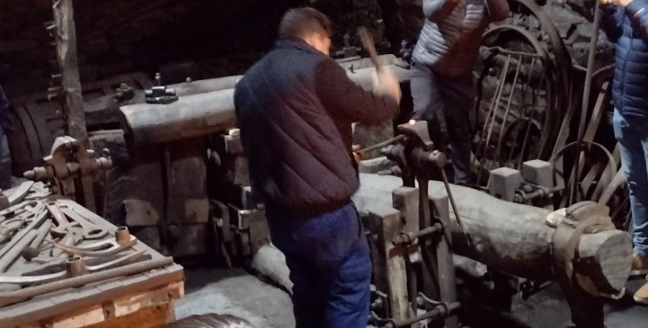
The stationary waterwheel was as much inside the shop as outside, visible in the dim light as connecting to a massive tree trunk that we learned was basically a huge hammer. Through an ingenious rigging a cable snaked up through the roof and connected to a spillway door. One need only pull the cable to open the spillway causing the water to turn the wheel. How much it was opened determined the speed of the waterwheel which, in turn, regulated the speed of the hammer. Because this was all made out of wood except for the hammer’s head, the connections would overheat relative to the speed of the work being done. To counter that, a wooden trough was placed to catch more of the water the faster the wheel turned, channeling it to cool the friction sites. It was brilliant, if ancient, engineering!
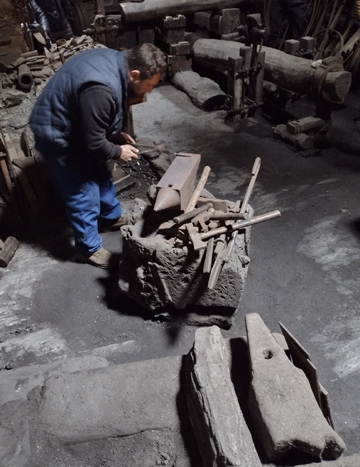
The sound of cascading water came from the rear of the forge as well. Behind the hearth there were carved stone steps up through a curved doorway into a well-like structure. Hidden beneath ferns and moss was the wooden system that replaced the conventional bellows. It is a Catalan horn, in which air is injected according to the Venturi principle. As water from the reservoir came down in and outside wooden tubes that narrowed in size as they descended, air was forced into the forge. That air was in turn regulated by a stopper that, when removed, allowed the air to flow into the room, but when in place it directed the flow right into the glowing coals of the forge. No bellows were needed! So much of the labor was automated that the smithy’s main task was to move the hot metal from the fire to the hammer to be shaped. It enabled the farming community built up around the forge to have all the repairs and tools they needed to survive.
Speaking of surviving, Manuel is part of a family tradition. I asked him about a fifth generation, a son to take over and he said “I have no son to succeed me. It would be impossible! Don’t get me wrong. I can have sons, but not one to continue this tradition. No one would want to.” And with that final statement, he picked up a hammer and shaped a metal spike for me, pounding it flat on four sides and curving the head. While it was still hot he hammer-stamped my name on the shaft, cooled the spike in water, and handed me a historic souvenir 1700 years in the making.
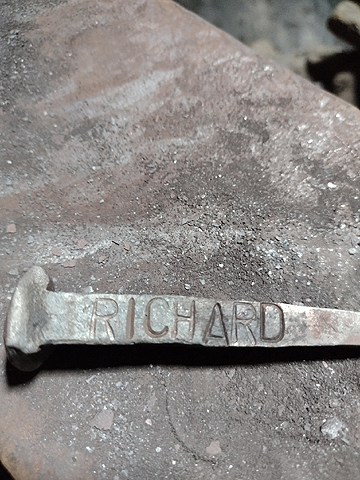
To visit Herreria de Compludo contact Castilla y Leon Tourism or see:
The Herreria de Compludo website.
There is a fee and specific times it is open. It is advised to make arrangements in advance. It is well worth the visit.


